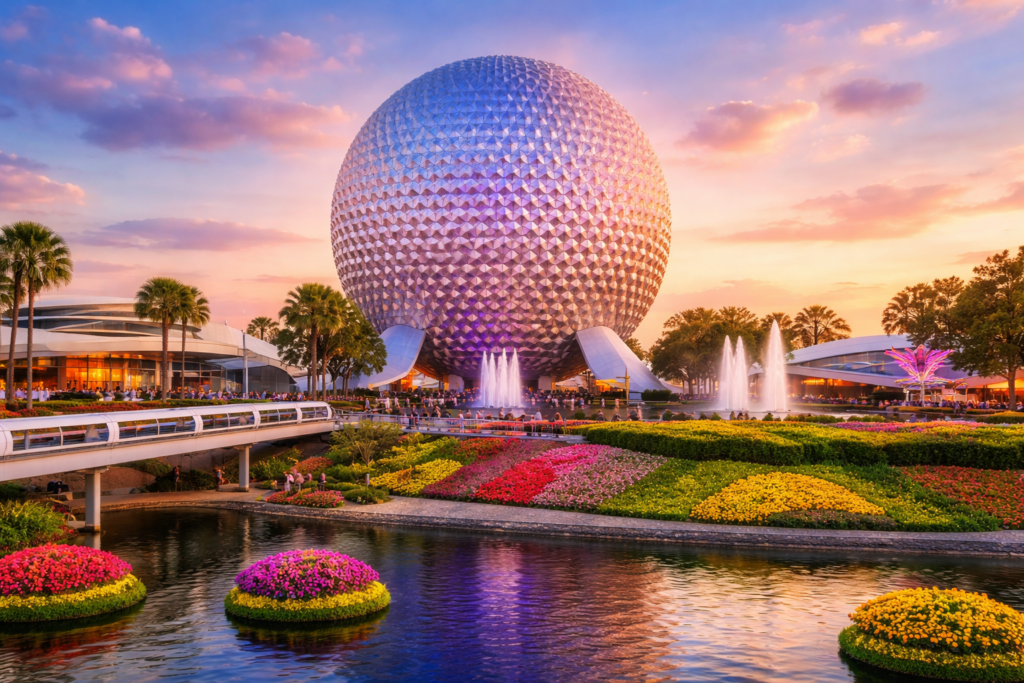
How can you continually engage your guests at a theme park, zoo, museum, or other themed destination?
While building new attractions (rides and exhibits) can add value, showcases innovation and drives attendance, they are rather expensive.
The solution? Organise events and festivals that entertain them.
A 26 year veteran of Walt Disney World and event planner extraordinaire, Tom Bisignano of Meeting Biz revealed at an Association of Singapore Attractions event how special events and entertainment can drive attendance, increase profits, and raise guest satisfaction in a cost effective fashion.
Why Events and Festivals
Speaking at the Association of Singapore Attractions’ Tourism Masterclass, Tom gave the example of how Tokyo Disneyland uses 6 themed events a year to encourage repeat local patronage. Festivals and events are useful in the destination business as they provide the following qualities:
- Inexpensive relative to building a new attraction
- Quick to market and thus, can be designed and developed quickly
- Fresh, ie can capitalise on current trends quickly
- Nimble – easy to change and adapt
- Attractive for partners and sponsors
- Opportunity to tap numerous themes depending on what holds people’s fancy, including obscure topics (eg garlic festival, pirates festival, balloon hat festival)
In the case of Disney’s Epcot International Food and Wine Festival which drew some one million visitors a year, its success formula centred around targeting mass and niche resident and domestic audiences, showcasing the culinary expertise of Disney chefs, providing opportunities for partners, and filling the gap periods before peak holiday seasons.
Recipe for Winning Events
Other than the above, successful events normally…
– start with a winning recipe, eg “the biggest, the longest, the first…”;
– utilise special ingredients – diverse offerings, great food, entertainment, educational opportunities etc;
– appeals to everybody;
– adheres to the idea that variety is the spice of life; and
– are held for long durations and are repeated annually/biennially. Minimally 30 days but can be up to 60 days long. The Food and Wine at EPCOT is 45 days in length.
Steps to Organising Events
How does one do it then? Here’s the process according to Tom:
1) Establish strategies and objectives. Conduct market research to understand one’s audiences and answer the questions of when, why and where.
2) Develop a sound business case. This is where creativity must be balanced with the business needs.
3) Ideation
4) Planning and production
5) Marketing
6) Execution of the event
7) Post event – measuring, feedback, ratings based on guest expectations.
Meeting Guest Expectations
On the all important issue of meeting guest expectations, Tom offered four cardinal rules for guests, namely:
1) Make me feel special
2) Treat me as an individual
3) Respect my children
4) Have knowledgeable cast members
Other ways to surprise and delight guests include rewarding one’s best customers and interacting with them. Let them flip the horn, switch on the lights, or drive the bus!
Brand Building for Attractions
Another key strategy in the theme park business is to build one’s brand. Once developed, it should guide all product decisions. To do it cheaply, tips include the following:
1) Create an affiliate programme – online or offline
2) Start or contribute to a blog
3) Put your logo on labels, stickers and all communication materials
4) Attach your tagline to emails
5) Put your logo on inexpensive items and premiums that can be given away
6) Start email newsletters for your customers
7) Offer your expertise to local or industry media
8) Visit your clients on holidays or near holidays
9) Have a style guide to implement
On building the event brand through word of mouth, key decisions to consider include:
– which consumers to target,
– who amongst the cast should talk to them,
– when should the conversations occur,
– what products should we talk about, and
– the key messages to be shared.
Marketing and Advertising
Finally on the issue of marketing and advertising, Tom shared that “marketing is more powerful to the consumer when you give them a little something extra”. For example, 20% more shampoo, $2 off your when you buy both tickets together, etc.
One should also communicate one’s offering in a compelling way. An example can be seen in the Minnesota Twins commercial.
To conclude events and festivals is a mixture of BIG “WOWs” and small “ah-ha’s”. Combining large-scale festivals with smallish activities can work towards a theme park, wildlife park or museum’s advantage.
What’s important is to give the guests what they want, and they’ll come back, again and again.

Mention festivals and it reminds me of the many campaigns in singapore. suggests the planners were right to adopt campaigns as a relatively inexpensive way to engage and sustain the messaging. Though I suppose even Disney doesn’t run their festivals with such frequency.
This post reminds me of the many events and festivals that the museums as well as Esplanade – Theatres by the Bay organises from time to time. Talking about which, the Night Festival will be coming soon in Aug 2011. Looking forward to it.
I found your website perfect for my needs. It contains wonderful and helpful posts. I have read most of them and learned a lot from them. You are doing some great work. Thank you for making such a nice website. If you want to know about event marketing visit Event Mobile Marketing .
Thats a very creative approach and also great article, thanks.
Boutique Public Relation Agency | POP Communications